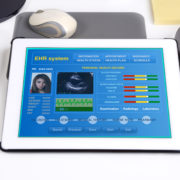Top 5 Ways to Improve Patient Engagement in Your Orthopaedic Practice
For your orthopaedic practice to thrive, it’s important to change the mode of dealing with patients. Today’s patients are responsible for a greater portion of their bill and are often using more traditionally consumer driven strategies to find and become loyal to their healthcare providers. For your orthopaedic practice, this means that there needs to be a shift in the way you communicate with patients – more as a healthcare consumer than as a traditional patient. One key thing that needs to be improved upon is patient engagement.
According to recent studies, patient engagement practices that lead patients to fully know what to expect during surgery can mean a 72% satisfaction rating, as opposed to a 32% satisfaction rating from those who didn’t feel they were well informed ahead of time. Patient engagement can mean better education, better outcomes, better patient compliance with therapy recommendations, and fewer re-hospitalizations. According to Becker Hospital Review, 86% of organizations polled indicated that they used some sort of tools or surveys to determine how engaged their patients were with services and how to improve.
Top 5 Ways to Improve Patient Engagement
There are numerous ways to try to improve patient engagement. Because you’re dealing with many different types of people, flexibility is often key. The types of communication practices that work with one patient might not be optimal for another. Adding a number of methods so that many different types of patients can better access information and communicate comfortably can an excellent strategy for increased engagement. Here are five methods that offer engagement for a wide variety of patients.
- Front Desk Convenience. The front desk is where your orthopaedic practice will garner loyal patients or, in the worst scenario, lose them. Improving patient engagement often starts with a real assessment of how well your front desk protocol functions. This might include streamlining administrative tasks and even basic customer service protocol additions. In many practices, patient engagement is enhanced simply by a pleasant, knowledgeable presence greeting the healthcare consumer and answering any questions in a timely manner.
- Streamlined Scheduling. Scheduling can often be the difference between garnering patients and losing them. Patients who can’t get an individual person or have difficulty scheduling their next appointment will be dissatisfied with the service. Adding automated or online scheduling can offer a convenient option for patients.
- More Physician Time. This can be tricky in a busy practice but patients often feel that they have a better understanding of their condition when they don’t feel rushed through the visit. If possible, it’s optimal to give patients ample time to discuss questions and concerns with their physician. In cases where that might not be possible, you can increase patient engagement by offering a web portal where patients can contact the physician directly so that he or she can respond later.
- Web Portal. A web portal can offer a number of conveniences for the patient, as well as your physicians. This option allows patients to schedule appointments, check their records, and pay their balance through a convenient website with their own personal login. Physicians can also leave personal notes for patients and update overall health news that would be beneficial in general.
- Follow Ups. Often patient engagement can be as simple as a follow up call or email. Having staff contact patients after procedures or on a schedule between visits can help them stay on track with health recommendations. It’s also an excellent customer service feature that helps patients build trust with your practice and their care.
It’s clear that patient engagement means a world of difference in your patients’ ability to heal and maintain optimal outcomes. The first step to building a better patient engagement strategy in your orthopaedic practice is in honestly assessing the success of your current protocol to find and address problem areas.











